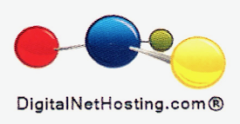Not Cloud Ready? Why You Should Stay with a VPS
Cloud computing is a buzzword of the moment, but what does it really mean? Is it really ready for prime time, or should you stay with a VPS? First, some definitions:
Head in the clouds?
In some ways, cloud computing is like grid computing in that it leveraged shared computing resources to handle applications instead of local servers or user devices. This is the supercomputing model revamped for the company IT folks, promising trillions of computations per second for financial services, personalized data processing or huge, immersive network computer gaming.
Cloud computing combines groups of servers using (mostly) low-cost, consumer-level PC components into networks that spread the data-crunching chores around. Virtualization techniques can maximize cloud computing’s power, we’re told, but what is not so clearly stated by its proponents is the fact that cloud computing is still rather hazily defined. Standards for PC and network connections, and software to make it all work, have not been worked out in final form.
Right now, cloud computing is a hot new thing, and its potential for accessing and sharing computing power as virtual resources, securely and in a scalable way, is making it attractive to large corporate data centers. It is all rather nebulous and uncertain, though, and early adopters need courage as well as expandable budgets.
VPS, tried and true
VPS stands for Virtual Private Server, which is created on a dedicated, physical server in a data center. VPS is essentially an isolated server sharing the hardware of a single, physical server, something like a dedicated server with its own RAM, disk space, and IP address. Since it can be independently rebooted, VPS acts like a standalone server on which you can run your own applications. Offering features similar to dedicated servers, but at a cost closer to a shared hosting plan, VPS servers can handle the demands of medium-sized business sites easily.
Every VPS account on a server will have its own drive partition, which allows them their own root access and bandwidth. This increases performance and lets users run their own custom applications. A VPS acts like a dedicated server in many ways, except when it comes to paying for them, as they are much lower cost, in comparison.
The cloud bandwagon
Cloud computing is definitely the hip new thing. Now IBM, Dell, Sun and Amazon are all doing it. Still, many experts believe the term is a multitasking buzzword, used to describe a confusing array of different technologies. The term cloud computing is being used to mean utility computing, grid computing, the software-as-a-service model, Internet-based applications, remote processing, autonomic computing and peer-to-peer computing. Someone using the term may be thinking of one (or, confusingly, several) of these definitions, and the listener may be thinking of something else entirely.
There are many people out there who believe the term cloud computing is just another buzzword that is used to describe too many technologies, making it confusing to many. The term Cloud computing has been used to mean grid computing, utility computing, software as a service, Internet-based applications, autonomic computing, peer-to-peer computing and remote processing. When most people use the term, they may have one of these ideas in mind, but the listener might be thinking about something else.
Real-world comparisons
The user forums are filling up with people who have a number of high-traffic web sites in the 10,000-hits-per-day range, not high-traffic like Amazon or iTunes with enough demand to warrant getting a solid, capable VPS or a dedicated server. Some are enticed by the claim of huge cost savings with the cloud, but discover that there are usually standard monthly charges over and above the utility billing. Clearly, at present, traditional hosting forms are less expensive until the economies of scale enter the formula, at which point the lines will cross and cloud computing will become the less-expensive alternative.
The problem, of course, is that no one yet knows where that line might be. Therefore, there is no way right now to make that calculation. Some cautious observers claim the economics of this personal network supercomputer are not cloud-ready, which is why you should stay with a VPS for now. This is borne out by the fact that the billing models vary among cloud providers so it is close to impossible to get a definitive answer on cost. Some cloud companies have online price estimating tools (usage and cost calculators) that will consider estimated bandwidth and storage needs to crank out an estimate of a monthly bill. That’s about all you can do to get a cost comparison at this point.
Does it even work?
Until the technology (and user experiences) mature, it takes a bit of work even to determine if cloud computing is roughly cost-comparable to traditional hosting, where you know what the fixed monthly fees are for your needs. However, there are far more important issues right now than price. Does cloud computing even work?
Not everyone is yet convinced about the scalability advantages claimed for the cloud, and the bean counters are certainly not sold on the cost savings yet. Among the user forum participants discussing cloud computing vs. VPS was a fellow working for a cost-conscious startup who stated that his company had converted to hosting in the cloud for all the advertised reasons. After three months, he said, they were looking at moving back because it’s too expensive. This is a common thing for early adopters to do. When they stop doing it, that will be among the first clues that cloud computing is ready for primetime.
Source by Amy Armitage

